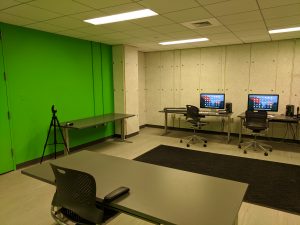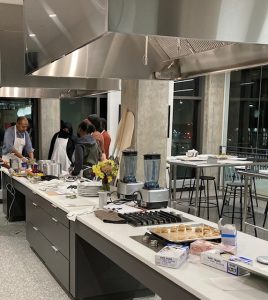It’s easy for people who haven’t stepped into a library in the last few decades to think of them as book warehouses, but any more regular user knows they are so much more. A big part of that is the library spaces themselves. As Michael Agresta discusses in his 2014 article for Slate, What Will Become of the Library?, many libraries have been moving some of their stacks off-site to focus more on becoming “third-places” where people can gather outside of their homes or workplaces.

The Boston Public Library system, where I work, is one of them. They’ve modernized the Central library and many of their branches as each has been renovated, including new spaces that invite new kinds of interaction. The Central Library an iconic building with ornate architecture and murals by John Singer Sargent, now also includes a makerspace with a 3D printer, Adobe Creative Suite, and the InnoLAB, a studio with a greenscreen, camera, and audio equipment where patrons can make videos and podcasts.

When the Roxbury branch completed its renovation in 2020, it was equipped with the Nutrition Lab, a professional kitchen that hosts cooking workshops that celebrate the myriad cultures that make up the surrounding community while helping patrons develop nutritional literacy and cooking skills. Next week alone, they have programs teaching how to prepare savory and sweet plantains, Irish Colcannon croquettes and Boxty Tacos, and a one-pot meal based on sofrito.
While these flashy additions are definitely amazing, they are really only feasible at the Central library or branches that have more space. However, a lot of thought can be put into smaller branches as well to create spaces that work for everyone. For instance, my branch in Roslindale, which completed renovation in 2021, is very small, with a single floor that can be seen in its entirety from the central circular combination circulation/reference desk. To make it more of a community space while trying to meet patrons’ sometimes conflicting needs, we have a sound insulated quiet reading room for those seeking the more traditional library experience, while the main floor is typically more lively, allowing people to work together and socialize at a normal volume.

Of course, there are ways to make the library more welcoming that don’t require a renovation. Like the Berkeley library in 2018, the Boston public library recently rolled out a limited library card called a Welcome Card that doesn’t require patrons to show proof of address or even a photo ID. So far, I’ve offered these cards to some frequent patrons experiencing housing insecurity who hadn’t been able to get a library card before, as well as to new immigrants who didn’t yet have a permanent place to live. It has been a great way to show that these patrons were as welcome here as any other.
Agresta, M. (2014). What Will Become of the Library?
Rees, M. (2018). No Permanent address? No Problem. Berkeley Library makes it easier for those without homes to get library cards